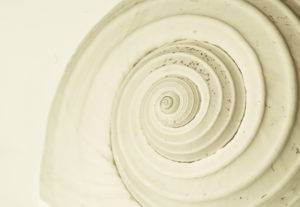by Susanna Bertelsen

In July, my daughter and I visited Ellis Island’s Immigration Museum and viewed Liberty Island from the ferry. The Museum Research room offered clues and discoveries to the immigration experiences just about 100 years ago, of both my Italian maternal and paternal grandparents. The audio walking tour of the Museum led us through the everyday life of people coming to America between 1894 and 1926. Like my grandparents from Northern and Central Italy, many came to America to seek freedom from oppressive poverty, hoping to find work and educational opportunities for themselves and their offspring. The Lady with the Lamp was an impressive welcoming image for them. Although the 10-day steamer passage across the Atlantic presented hardships and risk, their determination and faith gave them the courage to press on, in hope of a better life. According to the museum data, for most of them (at least 98%) their prayers were answered.
From the Museum’s well-presented displays we learned of the kindnesses, care, compassion, and resources provided to them as they registered and transitioned to trains taking them to reunite with relatives or sponsors in various states beyond New York City. Until then, the immigrants needed to persevere with patience through language interpreters, diverse sights and sounds, and long lines. The expressions on their faces suggested travel fatigue, uncertainty, and confusion that was to be expected.
The images of men, women, and children being examined and cared for by kindly and attentive medical and social services personnel was heartwarming to see. Those diagnosed with illnesses were given medical care, including surgery and hospitalization, while their families were provided food, clothing, a bed in the dormitories as they waited out the healing time. Others who passed the health exams waited for their turn to go the trains that would reunite them with relatives or sponsors in their new land. People passed the time in peaceful conversation, no doubt sharing the hopes and concerns on their hearts.
We saw the menu in the canteen, which offered three meals a day. We noted that careful attention was given to cultural preferences, including Kosher foods. From room to room, viewing the many images of life on Ellis Island, I became aware of thoughts of the phrase “love your neighbor” over and over again in my head, while tears of gratitude slowly rolled down my cheeks.
Over lunch, while my daughter and I enjoyed a panini in the restored Ellis Island dining hall, our conversation drifted to the blessings amid the hardships our immigrant relatives’ endured, and the fruits of their courage, resilience, faith and hope.
Upon our return from Ellis Island to Jersey City, the ferry circled Liberty Island and its giant symbol of freedom, “the Lady with the Lamp.” Looking upward, we were awakened from our seats to the postures of the Lady, this Statue of Liberty, as she glanced toward lower Manhattan. There she stood, with sandals on, a knee bent as if moving forward, holding up her giant lamp of hope, lighting the way forward.
I wondered how my Italian immigrant grandparents might have viewed this awesome sight 100 years ago.
Our gaze joined that of the Statue of Liberty, her golden shadow clouded by the rain clouds in the sky overhead. Painfully, our thoughts were pulled to the contrasting experiences that many are enduring on our southern borders, as well as across the borders of other places in the world today. The images of children and families in torment, those 21st century “huddled masses yearning to be free.” Then those earlier thoughts from the Immigrant museum came back to me, “love your neighbor,” clouding my view.
I wondered what my Italian grandparents might say today to the painful images of immigrants in the media. Somehow, I hear their echo, in unison with the “Lady with the Lamp,” “LOVE YOUR NEIGHBOR!”
How will their prayers be answered? It is up to each one of us now.
